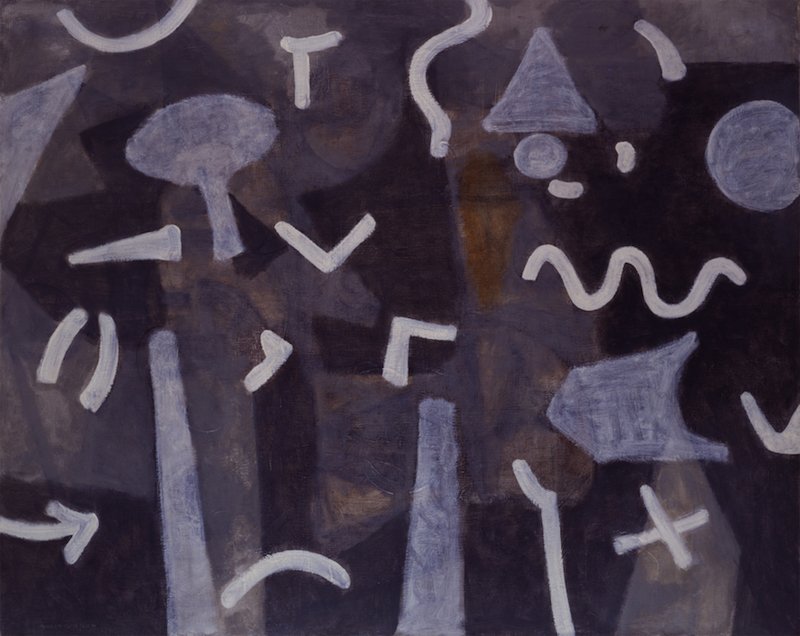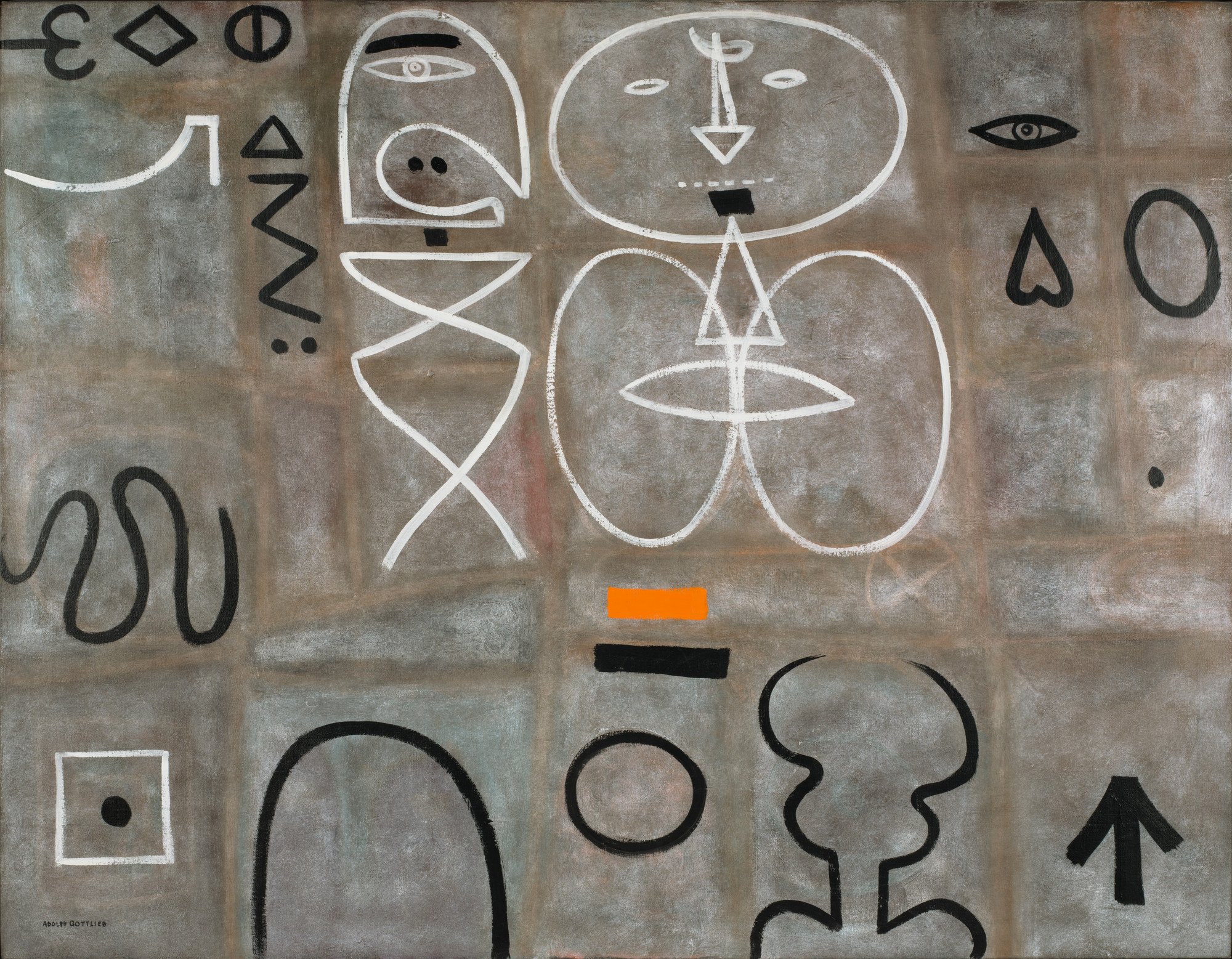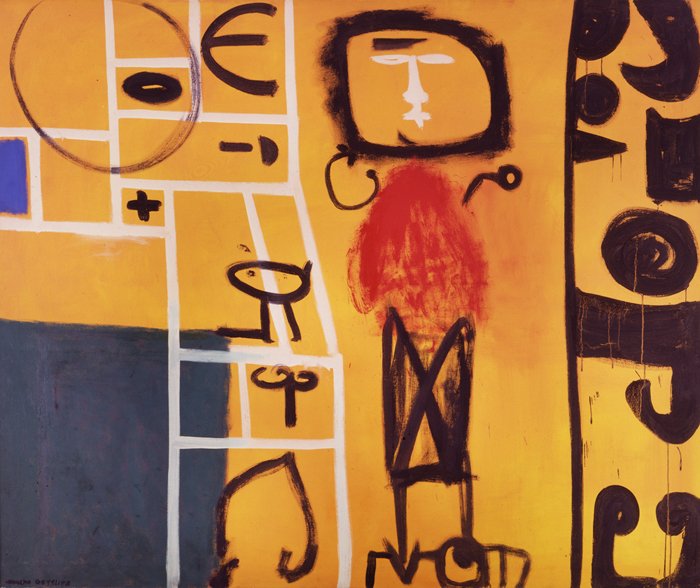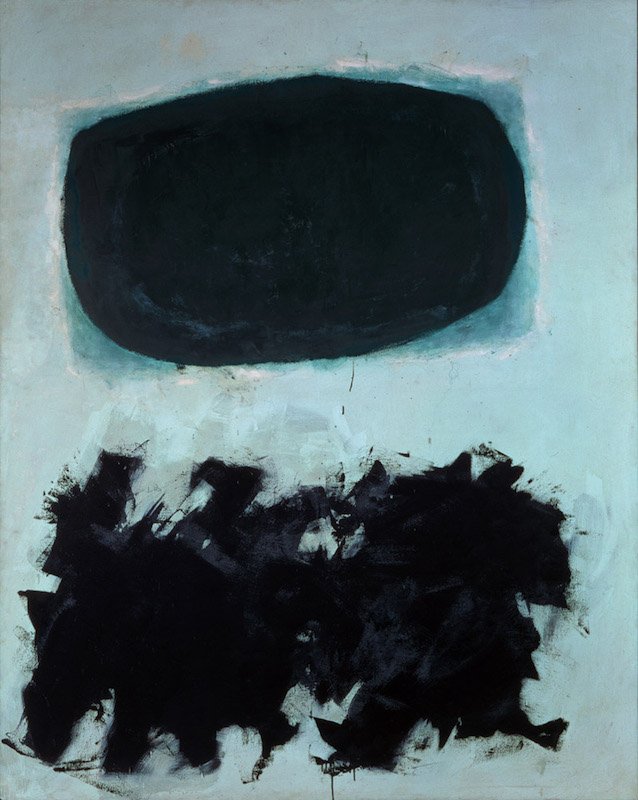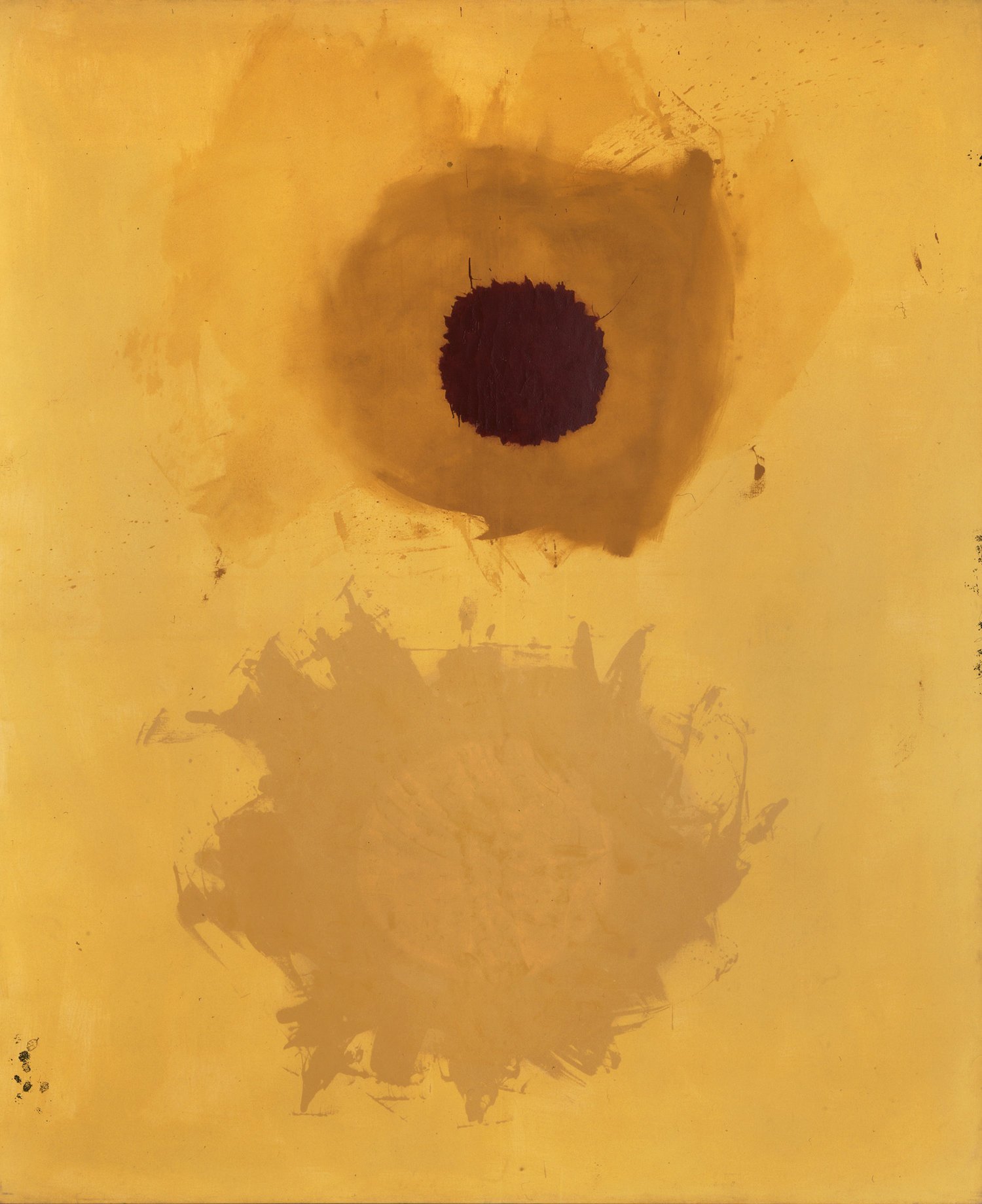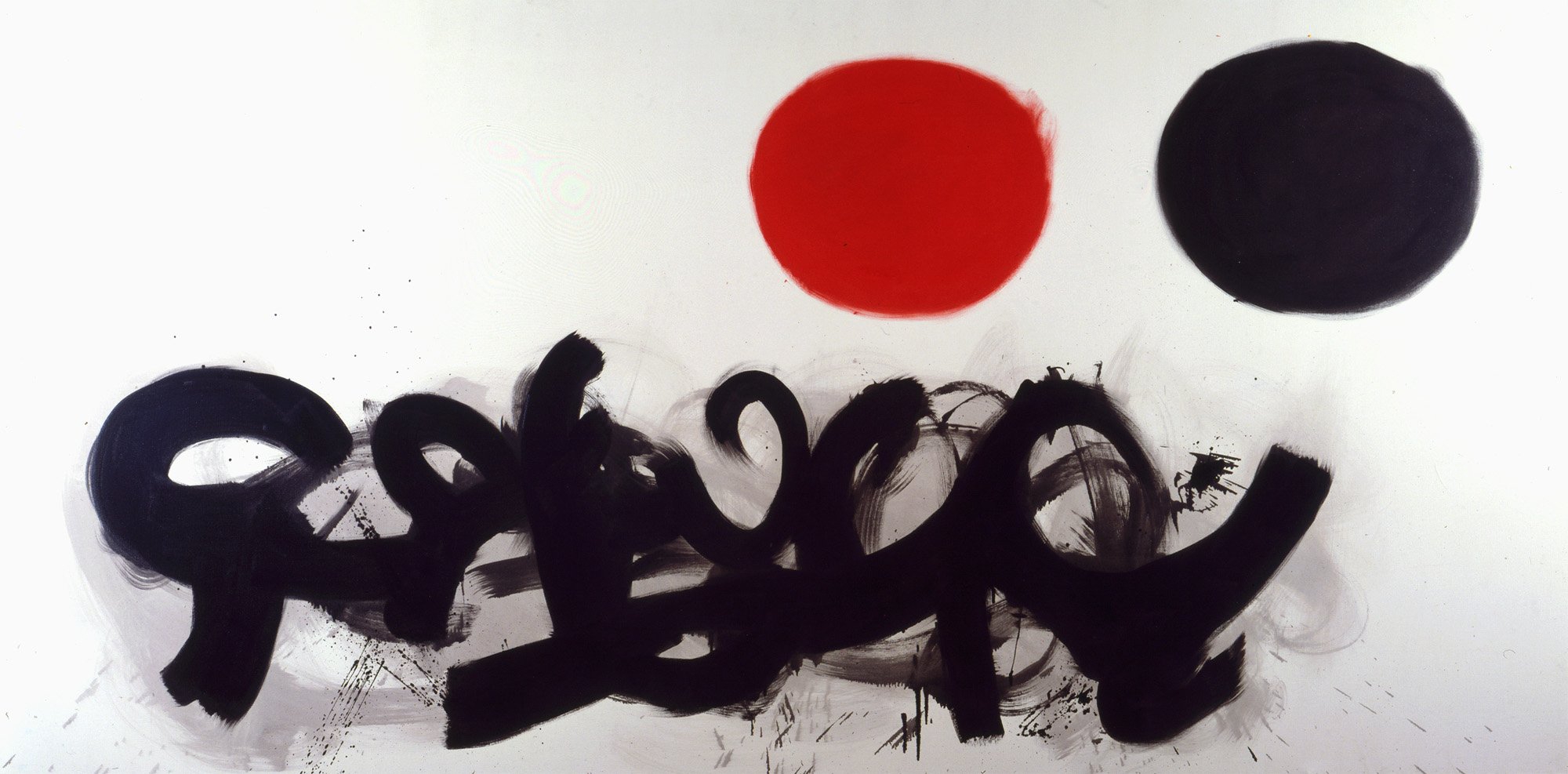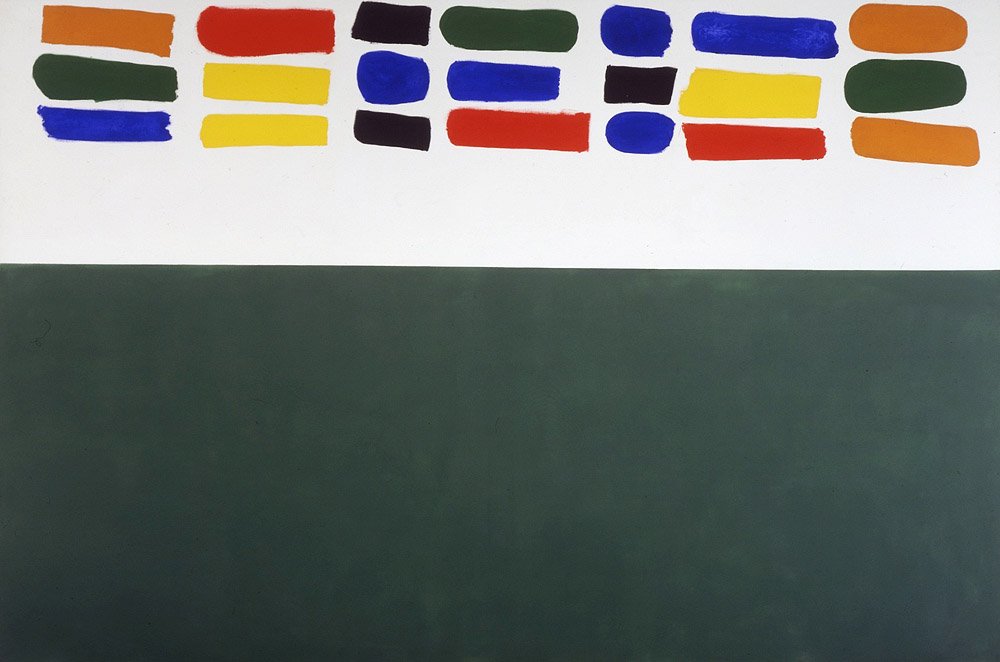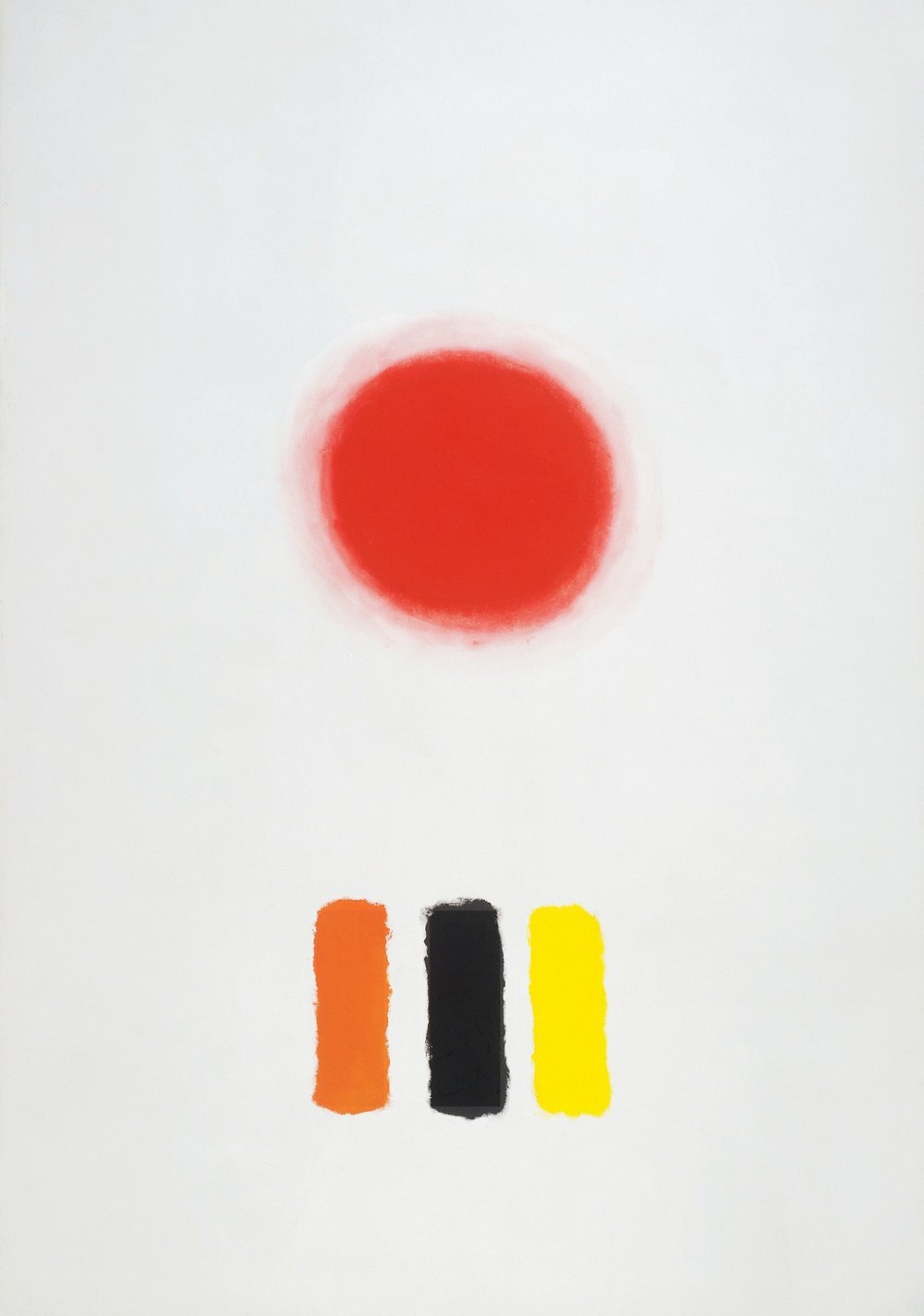"First of all, I'm too young for a retrospective. They're deadly affairs. It's like you're finished when you have a retrospective... People come to the hasty conclusion that you did your best work at 60 or 50. I decided to hell with that...I decided to have two phases of my work shown in depth."
-Adolph Gottlieb interviewed by Milton Esterow for The New York Times, January 19, 1968
In 1964, a major survey exhibition of Adolph Gottlieb's work was organized jointly by The Solomon R. Guggenheim Museum and The Whitney Museum of American Art. Both exhibitions opened simultaneously in February of 1968 - the first and only time this has occurred at two major New York art museums. The Guggenheim Museum exhibited Gottlieb's earlier work from 1941 to 1956 while the Whitney Museum showed work from 1956 to 1968.
Below is a selection of images, archival documents, and ephemera from these unprecedented exhibitions.
Installation view of Adolph Gottlieb, The Solomon R. Guggenheim Museum, New York, NY February 14, 1968 - March 31, 1968. Work pictured (left to right): Trajectory (1954), The Couple (1955), Armature(1954), Blue at Noon (1955), Labyrinth III (1954). Photographer: Budd Photography.
Installation view of Adolph Gottlieb, The Whitney Museum, New York, NY February 14, 1968 - March 31, 1968.
The Beginnings:
Below is a selection of correspondence that outlines the creation and evolution of the survey exhibitions at the Guggenheim and Whitney Museums.
An invitation to exhibit at the Whitney Museum addressed to Adolph Gottlieb from John Baur on December 16, 1964.
Adolph Gottlieb's reply to John Baur's correspondence, December 31, 1964.
An exhibition proposal from The Guggenheim Museum for Part I of the survey exhibition, the "Memorandum” is from Lawrence Alloway (“LA”) to H. Harvard Arnason (“HHA”) & Thomas Messer (“TMM”), respectively, the Curator, Associate Director, and Director of the Guggenheim, February 23, 1965.
A letter to Adolph Gottlieb from Thomas Messer, Director of The Guggenheim Museum discussing the success of the exhibition, February 20, 1968.
The Guggenheim Exhibition:
The Solomon R. Guggenheim Museum exhibited fifty-three of Adolph Gottlieb's earlier paintings, dating from 1941 to 1952. This first part of the survey exhibition was curated by the Guggenheim Museum's assistant curator, Diane Waldman.
“I adopted the term pictograph for my paintings out of a feeling of disdain for the accepted notions of what a painting should be. This was 1941. I decided that to acquiesce in the prevailing conception of what constituted ‘good painting’ meant the acceptance of an academic strait-jacket. It was, therefore, necessary for me to utterly repudiate so-called ‘good painting’ in order to be free to express what was visually true for me.”
- Adolph Gottlieb quoted by Diane Waldman, curator of The Solomon R. Guggenheim Museum, in the exhibition's catalogue
Below is a selection of installation images from the exhibition of the artist's earlier work at The Solomon R. Guggenheim Museum.
Installation view of Adolph Gottlieb, The Solomon R. Guggenheim Museum, New York, NY February 14, 1968 - March 31, 1968. Work pictured (left to right): Upper level: Romanesque Facade (1949), Man Looking at Woman (1949), Dream (1948), Lower level: Unstill Life III (1954-56), Symbols and a Woman(1951). Photographer: Budd Photography.
Installation view of Adolph Gottlieb, The Solomon R. Guggenheim Museum, New York, NY February 14, 1968 - March 31, 1968.
Installation view of Adolph Gottlieb, The Solomon R. Guggenheim Museum, New York, NY February 14, 1968 - March 31, 1968. Work pictured: The Seer (1950), Man and Arrow #1 (1950), Man and Arrow #2 (1950). Photographer: Budd Photography.
The Whitney Exhibition:
The Whitney Museum of American Art exhibited sixty-eight of Adolph Gottlieb's later paintings, dating from 1956 to 1968. This second part of the survey exhibition was curated by the Whitney Museum's associate curator, Robert Doty.
"The works on view at the Whitney reveal another, and far greater Gottlieb, a fully grown Expressionist painter who brilliantly uses the purest means of painting, color itself, toward an absolutely meaningful, yet incredibly economical pictorial statement." - Charlotte Lichtblau in the Inquirer, Philadelphia, March 3, 1968.
Below is a selection of installation images from the exhibition of the artist's later work at The Whitney Museum of American Art.
Installation view of Adolph Gottlieb, Whitney Museum of American Art, New York, NY February 14, 1968 - March 31, 1968. Artwork pictured: Expanding (1962), Red, Blue, Yellow (1966), Exclamation (1958), From Midnight to Dawn (1956), Focal (1965), Dialogue #1 (1960). Photographer: Budd Photography.
Installation views of Adolph Gottlieb, Whitney Museum of American Art, New York, NY February 14, 1968 - March 31, 1968. (left) Artwork pictured: Trinity (1962) partial, Two Discs (1963), Focal (1965), Icon (1964).
Artwork pictured: Nadir (1952), Equal (1964), Blue at Night (1957), Groundscape (1956) rear wall, Blast (1957) right wall. Photographer: Budd Photography.
Adolph Gottlieb at the Whitney Museum with Stuart Kranz and paintings Units #2, Azimuth, and Units #3 (all 1965), 1968. Photographer: Michael Fredericks.
Adolph Gottlieb at the Whitney “Adolph Gottlieb” exhibition speaking with an unidentified woman, 1968. Aureole (1959) is visible in the background. Photographer: Michael Fredericks.
The Press:
The exhibition was widely reviewed in the national and international press. Our archives hold dozens of articles and interviews with the artist in both newspapers and magazines. Notable reviews were published in The New York Times, The New Yorker, The Washington Post, ArtForum, Art News, and local newspapers across the country. Below is a selection of press written about the exhibition.
"Not in the memory of anyone consulted have two New York museums simultaneously presented one-man exhibitions of work by a single artist, as the Guggenheim and Whitney museums are doing now for Adolph Gottlieb. Even Picasso, whose 80th birthday was celebrated in New York with nine concurrent shows, did not have that honor."
-An excerpt from Newsday review of the survey exhibition by Emily Genauer, February 1968
"It is a moving and also a perturbing thing to suddenly have access to a sufficiently large body of a living artist's work so that one is able to assess it in its totality and discover aspects one had failed to see or had seen too easily. Although the sheer size of Adolph Gottlieb's exhibition - housed in the top two exhibition ramps at the Guggenheim and the fourth floor at the Whitney - inadvertently, I felt, put stress on the weaker aspects of his paintings, one learned from these in invaluable ways, and had, if anything, a heightened awareness of just how substantial and impressive are his talents."
- An excerpt from an Artforum review of the survey exhibition by Jane Harrison Cone, April 1968
"It is when Gottlieb peels away the anchors of horizon-line, sky, and earth, when he becomes most extreme in the relationship between form and color, that he achieves his most brilliant work."
- An excerpt from an ArtNews review of the survey exhibition by Diane Waldman, February 1968
